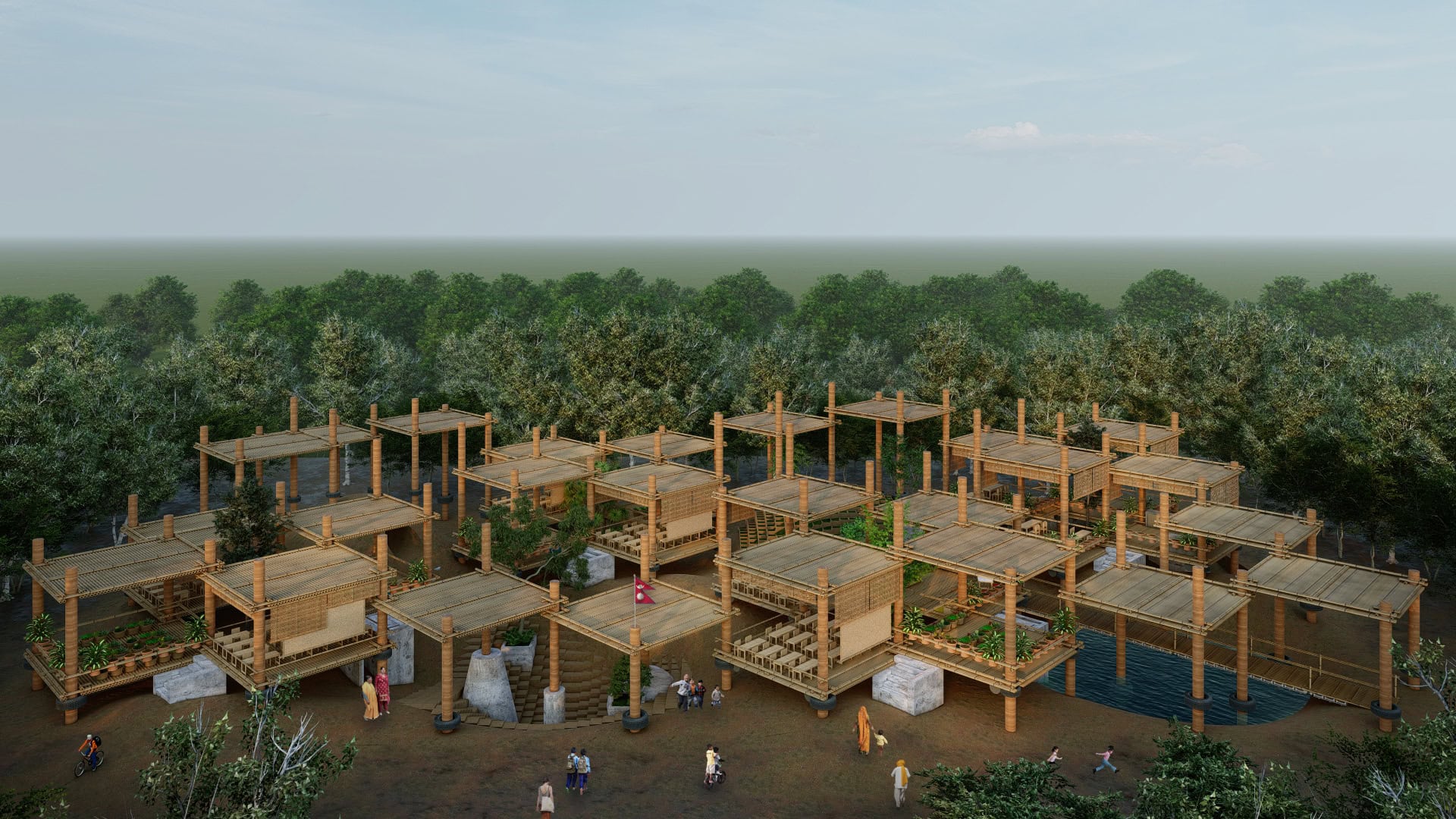Wall-less Resilience
After Nepal’s devastating 2024 monsoon and subsequent earthquake, thousands of students were left without safe spaces to learn. Wall-less Resilience offers more than an architectural solution it is a symbol of hope, resilience, and adaptive design.
Set in a landscape first approach, the school integrates two 4 meter deep retention ponds at its center. These serve multiple roles: water storage during dry months, flood mitigation during storms, and daily spaces for play and community interaction. Rising water levels offer a visual warning system, reinforcing awareness and preparedness.
Soil from the ponds is repurposed into two raised mounds, each four meters tall. One becomes a playground with tensile nets, promoting imaginative play and surface stability. The other is a terraced edible garden, supporting self-sufficiency and school meals. Crucially, both mounds double as emergency gathering areas, safely elevated above Kathmandu’s highest recorded flood levels.
Architecturally, the school redefines simplicity. Classrooms are open air, 6×6 meter modules with only a floor and roof no walls. This encourages airflow and reduces seismic risk. Inspired by traditional bamboo raft systems, each unit is built to float, anchored by vertical guideposts that allow vertical movement with water levels. This adaptive system responds naturally to its environment breathing, shifting, and protecting.
Earthquake Strategy:
Without rigid walls, the danger of collapse during earthquakes is minimized. Flexible lashing joints allow movement between roof and floor panels. In extreme tremors, the panels can detach safely onto large concrete footings, creating protective “triangles of life” for shelter.
Flood Strategy:
Bamboo floors rest on cantilevered steel beams cushioned with truck tires, enabling buoyancy. In rising floods, modules float and can link together into larger rafts becoming communal rescue platforms.
Material and Structural System:
The school is built with circular, sustainable materials: bamboo, rammed earth, reused barrels, and recycled tires. Stabilized rammed earth columns rise from concrete bases, offering erosion resistance and structural integrity. This low-cost, modular system enables fast assembly and long-term resilience.
Wall-less Resilience is not just a school it’s a living system. It teaches children not only academics, but how to adapt, grow, and stay calm in crisis. A prototype for education in disaster-prone regions, it proves that meaningful design can nurture both safety and imagination.


